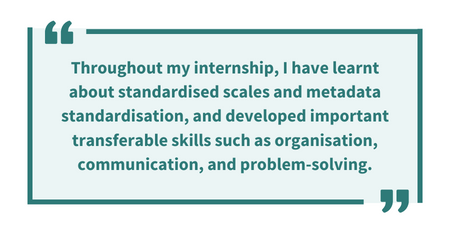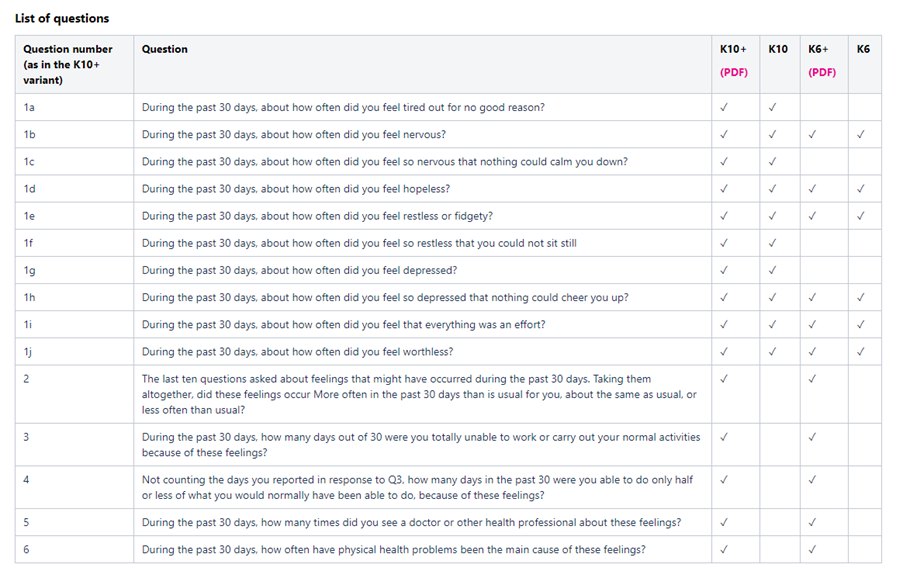 In the latest of our standardised scales project blog series, Le Phuong Mai Pham reflects on her internship with the CLOSER Discovery team and her work to help facilitate comparative longitudinal research.
In the latest of our standardised scales project blog series, Le Phuong Mai Pham reflects on her internship with the CLOSER Discovery team and her work to help facilitate comparative longitudinal research.
Creating metadata for standardised scales
As a questionnaire metadata intern at CLOSER, I created metadata for the standardised scales used by the CLOSER longitudinal population studies (LPS) in CLOSER Discovery. My main task was to compile and organise metadata on the CLOSER Technical Wiki, one of the key preparatory steps in the scaling up of CLOSER Discovery.
In the future, this metadata will be available in CLOSER Discovery, enabling researchers to determine if questions from the CLOSER studies’ questionnaires belong to a standardised scale and identify where these scales are used across the studies and waves of data collection. Throughout my internship, I have learnt about standardised scales and metadata standardisation, and developed important transferable skills such as organisation, communication, and problem-solving.
Building on previous work
During my internship, I worked with standardised scales (also known as summated scales or validated instruments) that are used by the CLOSER studies. These scales are a collection of related questions that measure an underlying concept (e.g., physical health, self-esteem, alcohol use). Metadata about the standardised scales such as the title, creator, publisher, copyright, and provenance were collected by Eliska, a former metadata intern at CLOSER. I enhanced the metadata of these scales by gathering information about the question items (e.g., “I take a positive attitude toward myself”, “I would never like to gamble with money, even if I could afford it”) and the different versions of the scales which include a smaller number of the items than the original scale, locating the questionnaires that use these scales, and organising the information on the CLOSER Technical Wiki. Each standardised scale is assigned a page on the website, displayed in alphabetical order for easy navigation.



Documenting the process
There were six main steps in creating a bespoke page for a standardised scale. First, I created a template to use as the basis for creating a standardised scale Wiki page. I then looked at both the existing documents created by previous interns and the literature to obtain the standardised scale metadata required by the Data Documentation Initiative (DDI) standard. DDI is a metadata standard designed for documenting questionnaire metadata from the social, behavioural, economic, and health sciences. I had to determine which question items were used in each version of the scale and which version was used by each study, so I collected these from published journal articles about the scale or the scale handbook provided by the creator and publisher. The next step was to locate where the scale is used in the CLOSER LPS questionnaires/datasets and match the scale with these questionnaires/datasets via a hyperlink. In the penultimate step, all collected information was organized into tables and, finally, I cross-checked the contents of the Wiki page with other available information sources to ensure accuracy and consistency.
Prioritising the user experience
Throughout all these steps, the experience of the potential users such as funders, researchers, and data managers was always considered to ensure the pages meet their needs. During the process, the Wiki page template underwent several modifications following input from team members to help improve the user experience, including on how the information should be presented to save researchers’ time and the need for easier navigation between the Wiki page and CLOSER Discovery.
Reflecting on the journey
Looking back, the experience I gained from this internship is invaluable to me as a postgraduate student who wishes to pursue a career in academia. I learnt valuable lessons about the metadata documentation and enhancement process, including the importance of capturing and documenting metadata accurately and consistently across sources and prioritising the user experience.
Since standardised scales vary in terms of publication date, format, and topic, there is no one-size-fit-all solution to the issues I encountered while working with these scales. Each standardised scale that I worked on presented a new challenge to be addressed. However, thanks to this, I have learnt to be resourceful by making the most of what I have such as consulting with other team members or looking at existing documents that are available at CLOSER.
Further information
This is the third in a four part CLOSER blog series exploring standardised scales. Read parts 1 and 2 below:
- Related blog: Part 2 – In search of standardised scales
- Related blog: Part 1 – Scaling up CLOSER Discovery
- Related: CLOSER Discovery
- Related: CLOSER Technical Wiki
Le Phuong Mai Pham completed her CLOSER internship in the summer of 2022 while studying for an MA in Applied Linguistics at UCL.
Suggested citation:
Pham, PM. (2022). ‘Empowering social and biomedical researchers with a new tool’. CLOSER. 23 November 2022. Available at: https://closer.ac.uk/news-opinion/blog/empowering-social-and-biomedical-researchers-with-a-new-tool/
